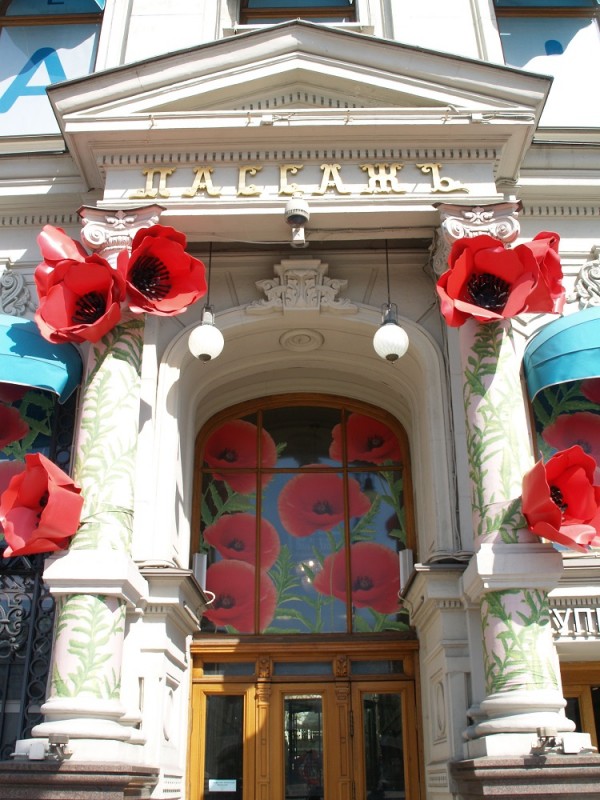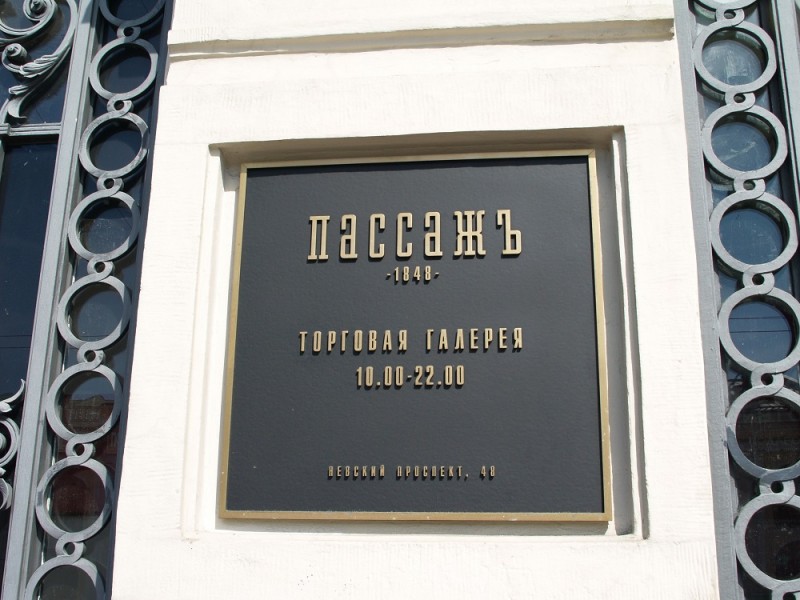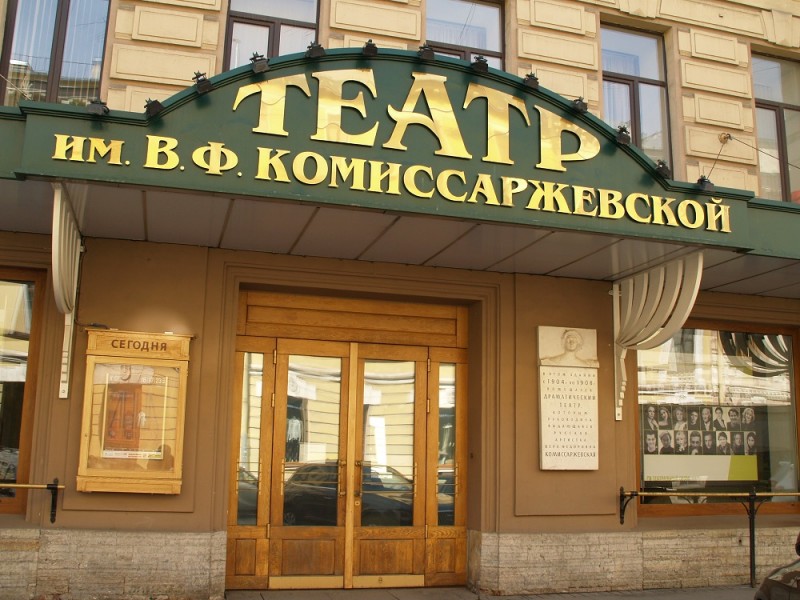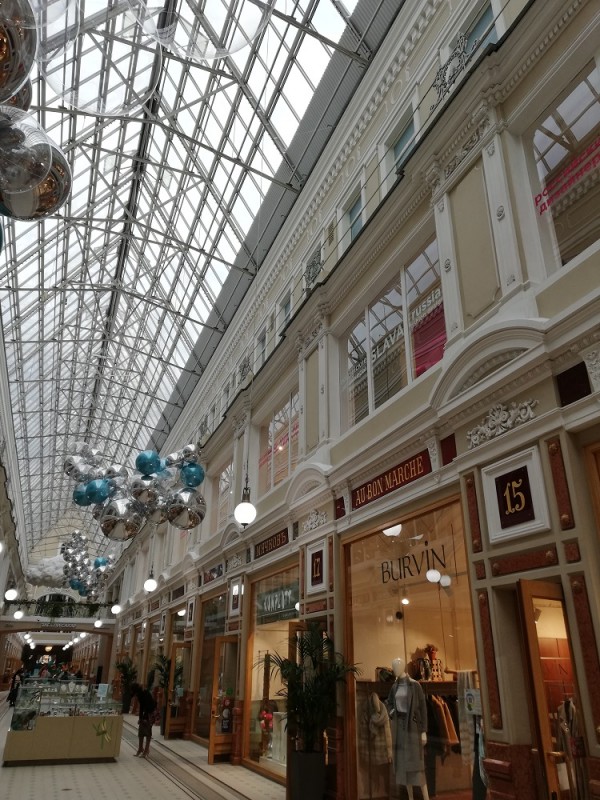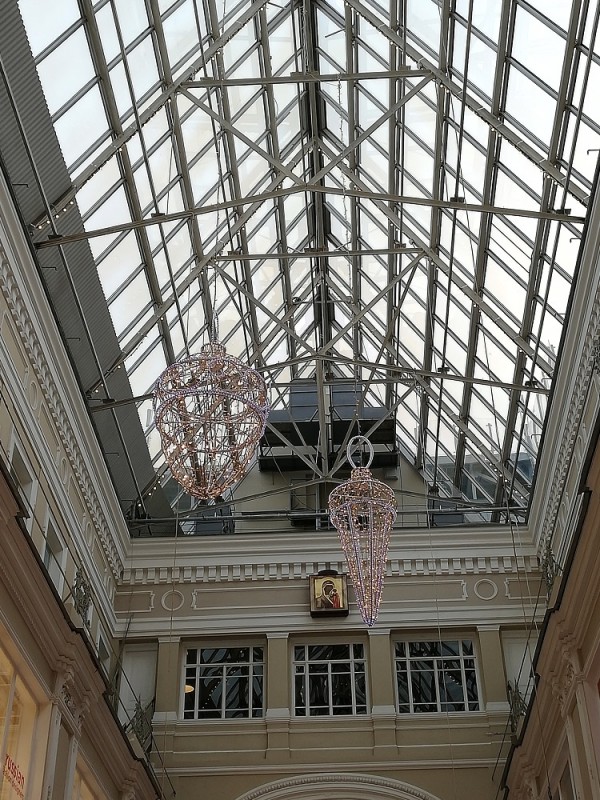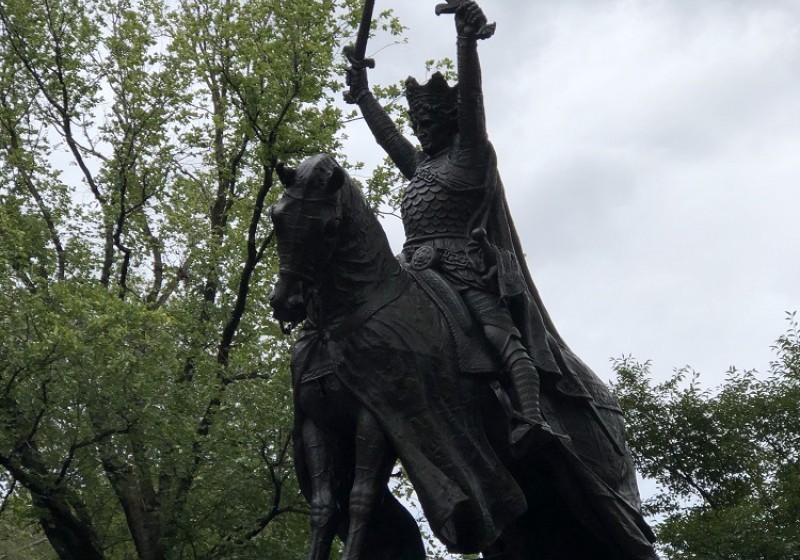“The Passage” shopping arcade in Nevsky Prospekt
Poles left a significant mark on the architecture of St. Petersburg in the second half of the 19th century. In Nevsky Prospekt alone, the city's main street, there are several buildings whose creators or co-creators were Polish architects. One of them was the professor of the Imperial Academy of Arts Rudolf Żelaziewicz, the designer of “The Passage", a modern glass-ceilinged shopping arcade serving also as a cultural and entertainment centre, which was a unique solution in those times.
A modern department store
Two connected plots of land between Nevsky Prospekt (No. 48) and the parallel Italianskaya Street were purchased in 1845 by Count Yakov Essen Stenbock-Fermor for the construction of "The Passage", a new type of a department store modelled on similar buildings in London and Paris. The design was entrusted to a Pole, Rudolf Żelaziewicz. The building was constructed between 1846 and 1848 as two symmetrically placed three-storey galleries, 180 metres long. The space between them was covered with a steel and glass roof, which integrated the interior and provided a source of light. The two lower storeys were used for shops and the third storey was used for flats, while the ground floor comprised warehouses and a space for foodstuff trade. The façade was decorated in the Renaissance Revival style.

“The Passage” shopping arcade in Nevsky Prospekt
There were several dozen shops selling mainly expensive clothes, jewellery and other luxury goods. Because of the exorbitant prices of women's clothes, imported straight from Paris, “The Passage” was nicknamed "death to husbands". This was no ordinary department store. According to the owner's idea, “The Passage” became a centre of cultural and social life. It comprised not only restaurants, cafes, the Credit Lyonnais bank (the only foreign bank operating in Russia at that time), but also a hotel, a cinema, exhibition halls, a cabaret, a museum of anatomy and a wax museum. On the side of Italianskaya Street there was a concert hall, where performances of the most eminent Russian and European artists were organized. Among the prominent composers who presented their music in "The Passage" were: Ferenc Lehár, Alexander Glazunov and Stanislav Moniuszko, as evidenced by the plaque in the façade.

The plaque including the name of Stanisław Moniuszko
Cultural functions
At the end of the 1850s the concert hall started to be the venue for public lectures and discussions, as well as literary events. The first of these, on 10 January 1860, was opened by Ivan Turgenev. The subsequent events featured, among others: Nikolai Nekrasov, Alexander Ostrovsky, Taras Shevchenko and Fyodor Dostoyevsky. The latter made "The Passage" famous by setting there the plot of a satirical story entitled Crocodile, or Passage through the “Passage”.

Entrance to the Komissarzhevskaya Theatre
The address No. 48 Nevsky Prospekt has also other literary connotations. It entered the history of St. Petersburg in the first half of the 19th century as the place of residence of Georges d'Anthès, the man who killed Alexander Pushkin in a duel.
The original decoration of the "The Passage" has not been preserved. In 1898-1900 the building was remodelled by architect Sergei Kozlov, who added one floor and redesigned the façade, giving it an eclectic character and cladding it with sandstone. In 1902 the concert hall was converted into a theatre. Today it is the seat of the Komissarzhevskaya Theatre, and "The Passage" still serves as a luxury shopping mall.

The interior of "The Passage"
Architect Rudolf Żelaziewicz
The designer of the building, Rudolf Żelaziewicz (1811-1874), born in Warsaw, was an architect at the department of military settlements in the Kingdom of Poland. He then moved to St. Petersburg, where he was a teacher at the Imperial Academy of Fine Arts. He went down in the history of Russian railways as the designer of archetypal stations along the railway line between St. Petersburg and Moscow. Together with the eminent architect Konstantin Thon he designed the building of the Moscovsky railway station (former Nikolayevsky station), built in 1844-1851. In St. Petersburg Żelaziewicz also designed the building housing a police station, a prison and a fire station at Fontanka quay in the 4th Admiralty district (Kolomna), as well as the building of the Pavlov Institute for Orphaned Girls.
Written by: Ewa Ziółkowska


